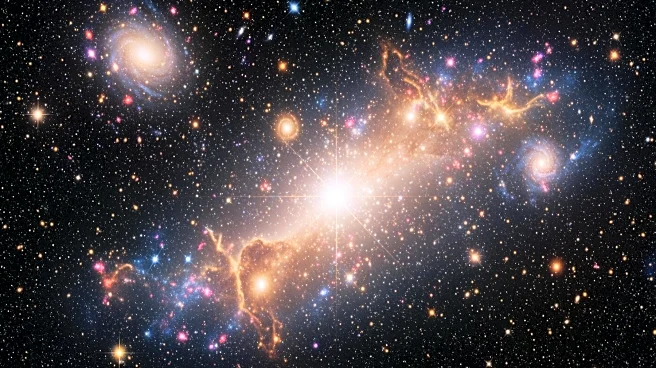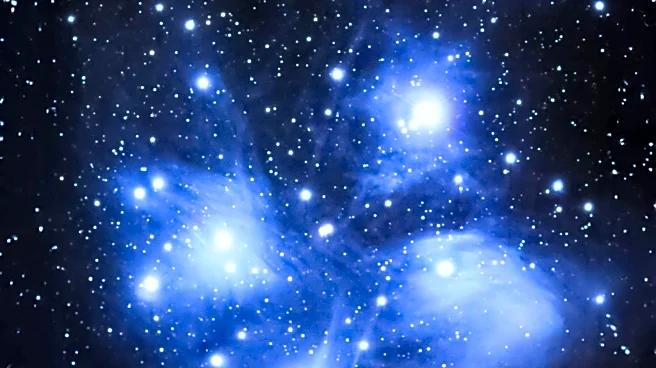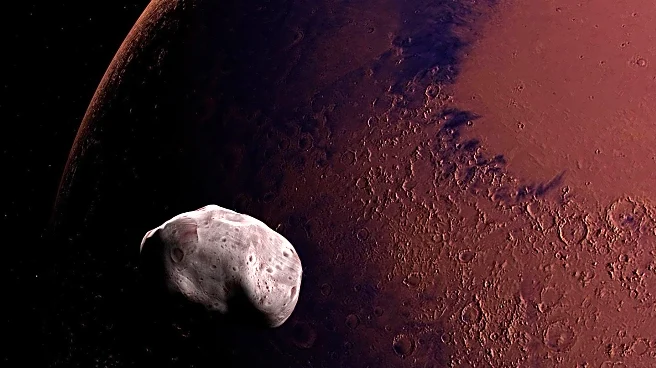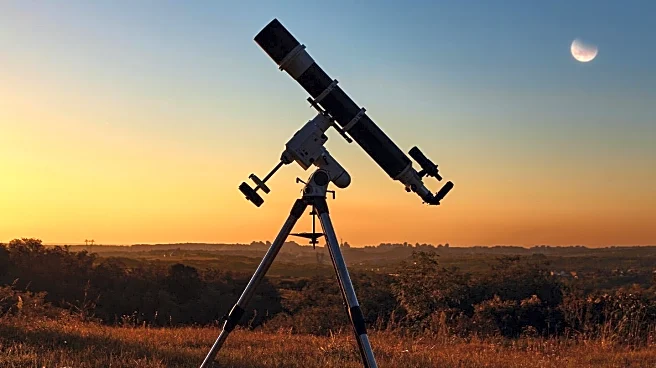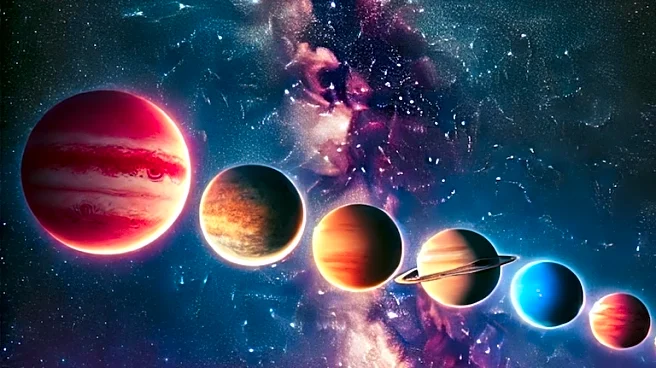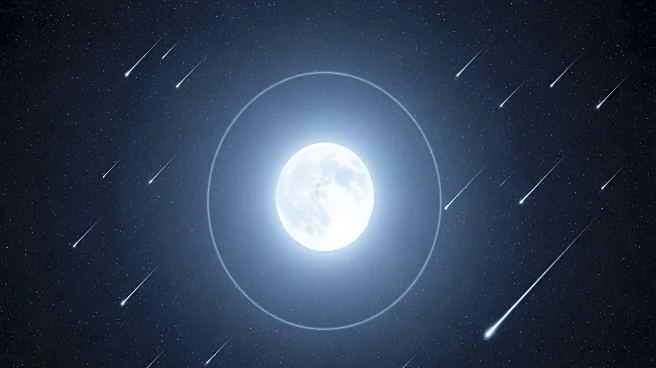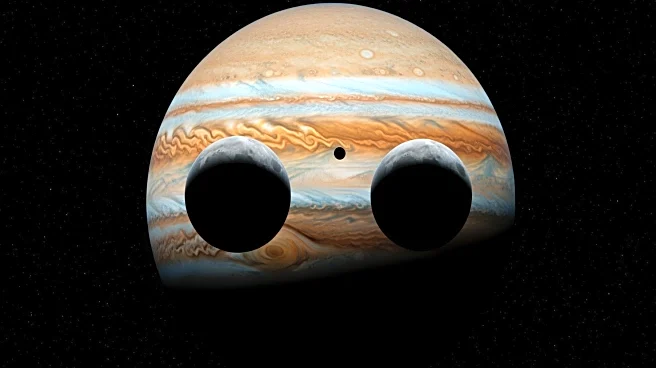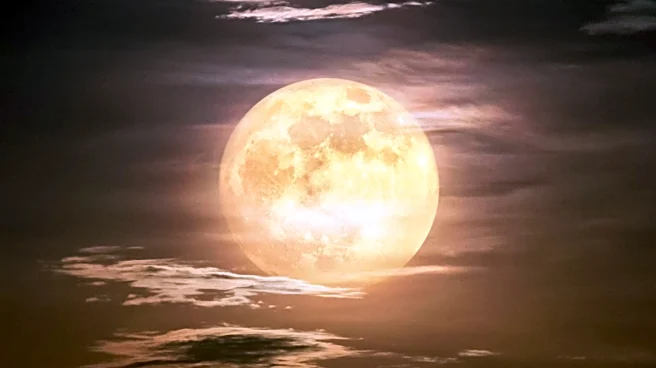What's Happening?
Astronomy Magazine provides guidance for observing the open cluster M103, located in the constellation Cassiopeia the Queen. M103 is a young open cluster of stars, identifiable at magnitude 7.4, situated
1° northeast of Delta Cas. The cluster spans approximately 6' in angular diameter and contains several dozen bright stars. It is positioned between 8,000 and 9,000 light-years from Earth and is estimated to be between 9 and 25 million years old. A prominent feature of M103 is a central red giant, which may appear red or orange compared to the surrounding blue-white stars. The magazine also notes a celestial event involving Titan's transit across Saturn on November 6, 2025, and provides astronomical ephemerides for November 6, including sunrise, sunset, moonrise, moonset, and moon phase details.
Why It's Important?
The observation of celestial bodies like M103 offers valuable opportunities for amateur astronomers and enthusiasts to engage with the night sky. Understanding the characteristics and positioning of such clusters enhances knowledge of stellar formations and their evolution. Events like Titan's transit across Saturn provide unique viewing experiences that can inspire interest in astronomy and science. These observations contribute to public education and appreciation of the universe, fostering a sense of wonder and curiosity about space exploration and the cosmos.
What's Next?
Observers are encouraged to look to Cassiopeia to view M103, using binoculars or small telescopes to locate the cluster near Delta Cas. The magazine's Sky This Week column offers additional guidance for upcoming celestial events, helping enthusiasts plan their observations. As the geomagnetic storm continues, there may be further opportunities to view the northern lights, enhancing the overall experience of sky watching during this period.
Beyond the Headlines
The study and observation of celestial phenomena like M103 and Titan's transit across Saturn highlight the importance of astronomy in understanding the universe. These events can spark interest in scientific research and education, encouraging more people to explore careers in space science and technology. The cultural and educational impact of such observations can lead to increased public support for space exploration initiatives and funding for scientific research.
